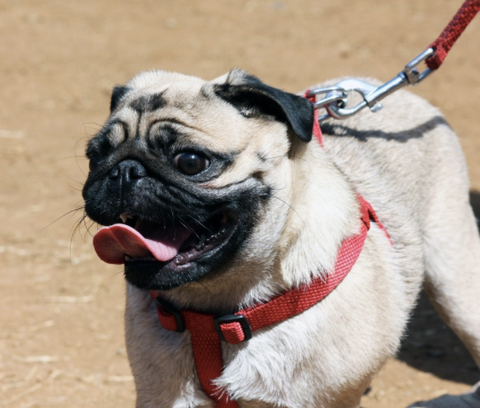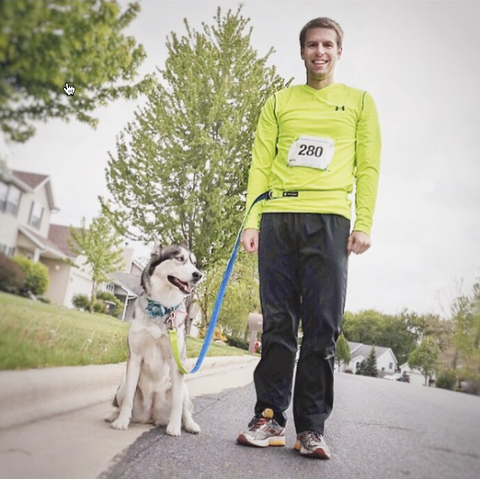Living by the old adage that a tired dog is a good dog, it is certainly critical to get your dog out and tire him out.
The best way to get them out and engaged is a run with the partner and crime...it not only keeps him happy, but it will keep you in shape as well (welcome to the reason I started running). Not only that, in my experience dogs are the best running partners. They will go any time, any distance, and are always upbeat to go for a run whenever you grab the leash. They let you choose the route, set the pace (most of the time), and never complain about the weather...but most importantly they are perfect motivation to not only push a little harder on the run....but also keep you motivated to keep a consistent running schedule...after all who can bare a sad puppy dog face?
Most dogs, depending on a few variables, may require more or less, but as a general rule of thumb, dogs need about 30 minutes of activity per day. If you running is the activity of choice, it's important to train your dog up to a comfortable exercise level. If you have a dog that's new to running, just like you would with a new running buddy, you need to ease him into the distance and pace. Start with a few days a week going a mile or two...and slowly increase frequency and length of the runs. Generally, to stay safe you don't want to increase the runs by more than 10% at a time.
Otherwise, there are 3 considerations when taking into account how often and how far a dog should run.

Although puppies may seem like a never-ending furry of energy, it's not recommended to start running your pup before 7 months. Dogs must reach skeletal maturity in order for their bones to support their muscles. If the muscles tire and can not support the bones, the puppy soon begins grinding bone on bone, which ultimately may retard their growth and cause other health issues. For most dogs this skeletal maturity occurs within their first year, although for some of the more enormous breeds, it doesn't happen until closer to the age of 20 months.
Likewise, if you have an older dog, running them too much may cause muscle and/or joint strain.

Generally, the smaller breeds are less inclined to want to go out for a run...this is not necessarily energy levels, but a product of their size - the littler those legs are the more they have to churn them to keep up with you...which means their run is 10x harder than yours! On the contrary, the larger more lean sport dogs are equipped with longer legs to keep up.

Just like humans, different dogs and dog breeds have different levels of energy and temperaments. If you have a Pug, most likely you're never going to do a 10k with your pup. On the other hand if you have a Weimaraner you might be leaning on him as your daily training partner.
Some dog breeds are more susceptible to having more energy and being better equipped to run. This isn't always necessarily a product of the dog size, but more their disposition. Pugs, for example are prone to obesity and actually do need to more energy than most owners realize...and contrary to popular believe, not all small or toy breeds get enough exercise in the house.
Pay close attention to the behavior of your dog...you will know small or large...quiet or loud...that your dog needs some energy out.
Reynold Krieg
Mar 07, 2017